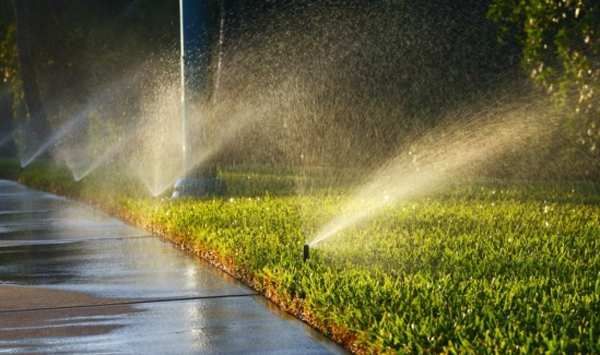As the climate heats up and droughts intensify, especially in the American Southwest, it's crucial that households reduce their water usage. Water districts urge their customers to save, but their messaging generally lacks rigorous evaluation of efficacy.
In a new paper, researchers from UC Santa Barbara reveal how a large-scale field experiment in messaging based on psychological science significantly reduced water consumption on the Central Coast of California.
The paper, “How managers can reduce household water use through communication: A field experiment,” in the Journal of Policy Analysis and Management, details how the researchers designed messaging based on the information-motivation-behavioral skills model (IMB) for single-family households.
Co-author Sarah Anderson, an associate professor of environmental politics in the Bren School of Environmental Science & Management, said the IMB model has been used successfully to modify behaviors in health care, especially in preventing the spread of HIV.
In short, the model posits that “individuals must have the requisite information, motivation, and behavioral skills to engage in and maintain behavior change,” according to a 2019 paper, also co-authored by Anderson, that analyzed 24 conservation studies that used aspects of the IMB model. “People need to know what the problem is, how they can solve it, and be motivated to take action.” That paper summarizing 24 other studies provided the impetus for the Central Coast experiment.
“Nearly every message water districts and researchers send to save water can be put into those three categories of information, motivation, or behavior,” said Anderson, who noted that while those efforts were being used, they weren't being evaluated in any kind of consistent way. “And so that led us to think, ‘Oh, it's worth trying to develop a rigorous test to evaluate messaging campaigns within this framework and see whether it appears that you need all three components or whether partial messages work.”
In the new study, the researchers randomly assigned 7,500 households to receive mailings featuring different aspects of the IMB model and measured their water use. A customer group of 2,500 households that did not receive messaging served as a control. All households that received messaging reduced water consumption — 509 gallons on average each — in the first month. As the paper notes, if all 10,000 households had been sent mailings, more than 5 million gallons would have been saved in the first month.
Researchers also found evidence that messaging using all parts of the IMB model could contribute to the savings lasting longer.
“If you include all the components of this information, motivation, and behavior,” Anderson said, “there's some indicative evidence that the effects might be a bit longer lasting. They're not necessarily bigger, but they might last a little longer, persist a little longer.”
She noted that the water district they worked with had been actively working to reduce water use with messaging and advice. So it was a pleasant surprise to find that sending another mailing further reduced water use, which she calls “promising.”
“That's a pretty cost-effective intervention if it actually works and lasts for a couple of months,” she said. “It's pretty cheap to send an effective mailer.”
Additionally, the study found that the messaging resulted in bigger reductions in high-water households. Anderson calls that “a good lesson for water districts, that those are the folks that you ought to message to if you've got a limited budget — really focus on those high water use households.”
Demonstrating the effectiveness of messaging has implications beyond reduced water usage. Not only does the study offer a kind of low-tech template for water districts, it could help protect the environment as water gets scarce in the face of climate change, Anderson said.
“Going forward,” she said, “water districts are going to be facing a choice between investing in expensive and environmentally disruptive infrastructure and just getting people to reduce their water usage. And so effective messaging has an additional dividend in not having to invest money to cause environmental destruction.”
This is a guest post from Jim Logan at UC Santa Barbara that was originally published at The Current.
